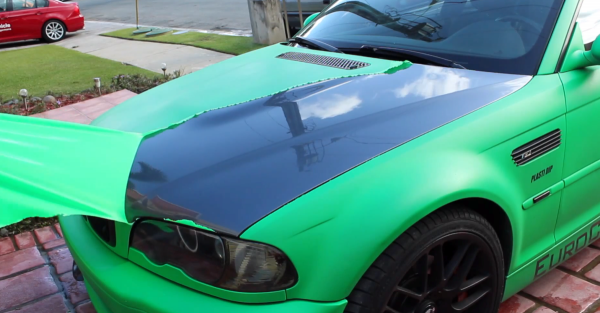If you are considering plasti dip for your vehicle you may be left with a lot of questions. Part of the decision process is properly understanding the pros and cons of adding plasti dip to your vehicle. Like most products, you’ve probably heard differing reports from different people. Here is some of the most relevant information on plasti dip to answer all your questions.

Longevity
Many people wonder on the longevity of the product before they are willing to invest in it. Generally, you can count to plasti dip to hold up well, if done correctly for about three years. This product is known for its durability, staying firmly bonded to your paints surface.
But, What About Inclement Weather?
As the Fall and Winter seasons are quickly approaching, many people wonder if plasti dip will be able to withstand the cold miseries of winter. Fortunately, plasti dip can be your car’s best friend during both winter and summer as it holds up well in extreme heat, as well as withstands winter snow, ice, ran, and even salt. Thus, this product is extremely beneficial to protecting your car’s paint and rims against the harsh realities of wintertime driving.
Paint and Rims?
Many people are surprised to learn that plasti dip is appropriate for applications to your car’s paint and rims. While plasti dipped rims are not quite a durable as paint, due to their immediate contact with road debris, salt, and weather conditions, you can still expect plasti dip to hold up for 1-2 years on the rims. Regardless, even if you reapply each year to the car’s rims, plasti dip can offer superior protection against decay and abrasion to your car’s beautiful rims.
The Breakdown
Despite plasti dips longevity on the road, it can sustain damage if exposed to gasoline, as it is solvent based. Thus, to maintain your coating in tip top condition, be cautious not to drip fuel on your car when filling it up. Additionally, keep your plasti dip far away from products containing thinners or solvents to avoid damage.
Removal
When considering whether plasti dip is a good option, many people are concerned about the removal process. Removing plasti dip that is done correctly is a simple process. It is a matter of peeling the product off. Plasti dip will not leave a residue or any damage to your car’s original paint. It is important that the installer put multiple coats of dip on each area of the paint in order to make it a simple removal process. If the coat was applied thinly, it will still peel off without damage but will tear into pieces and take much longer to fully remove.
Can I Still Wash My Car Once It’s Been Dipped?
A common concern revolves around the maintenance of the dip after application. Afterall, no one wants to run around in a dirty car. Maintaining the outside of your car with plasti dip is simple. You merely clean it in much the same manner as your regular paint, with soapy water and a soft cloth, followed by a thorough rinsing. Additionally, it is safe to use window cleaner on plasti dip. Just stay away from any product that contains thinners, solvents, or gasoline to clean plasti dipped surfaces.
After learning more about plasti dip and its many benefits, it may just be the product of your dreams! Consider letting the experts dip your car today!
This post comes from the TODAY Parenting Team community, where all members are welcome to post and discuss parenting solutions. Learn more and join us! Because we're all in this together.
